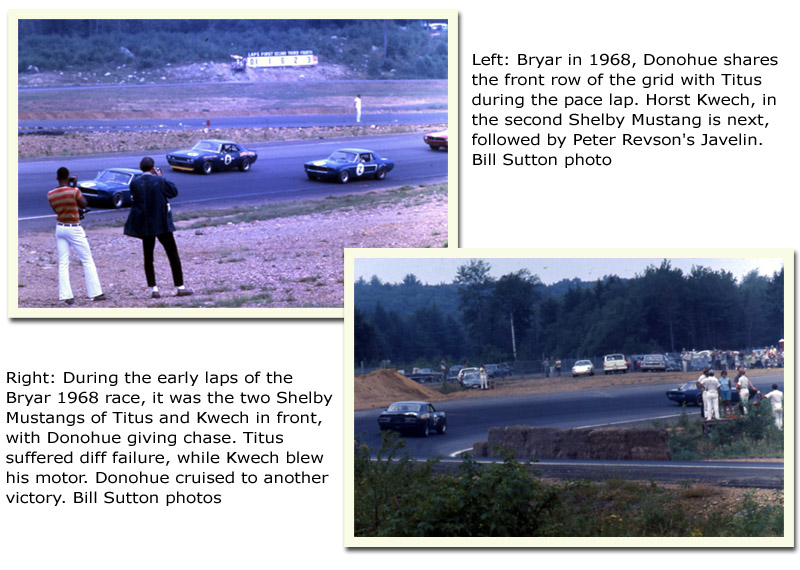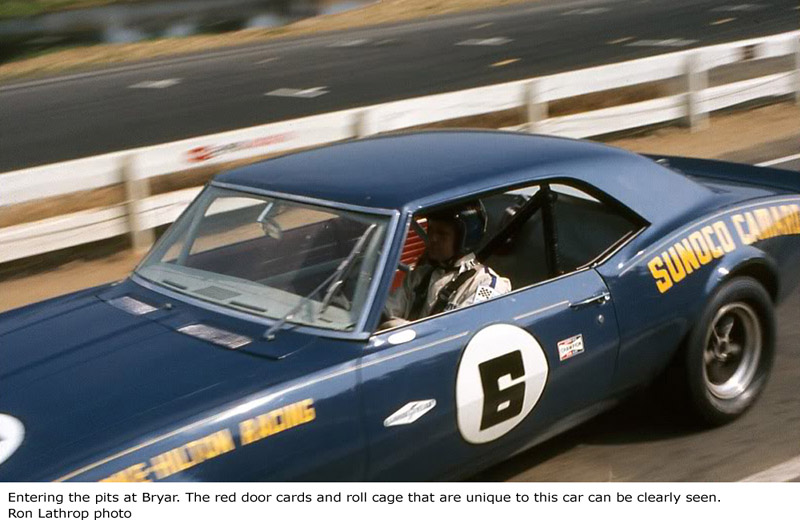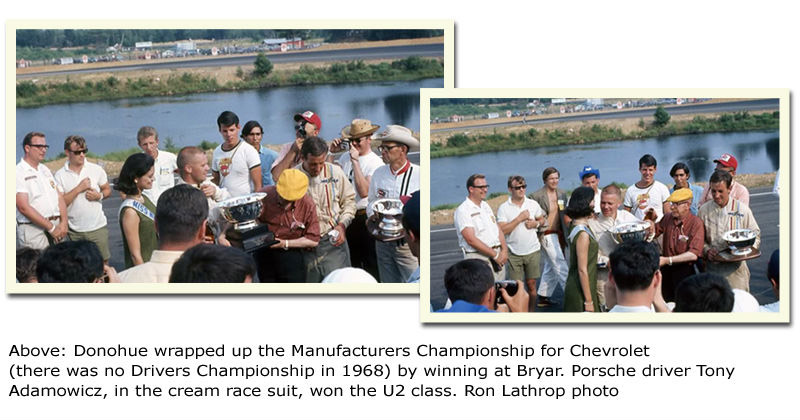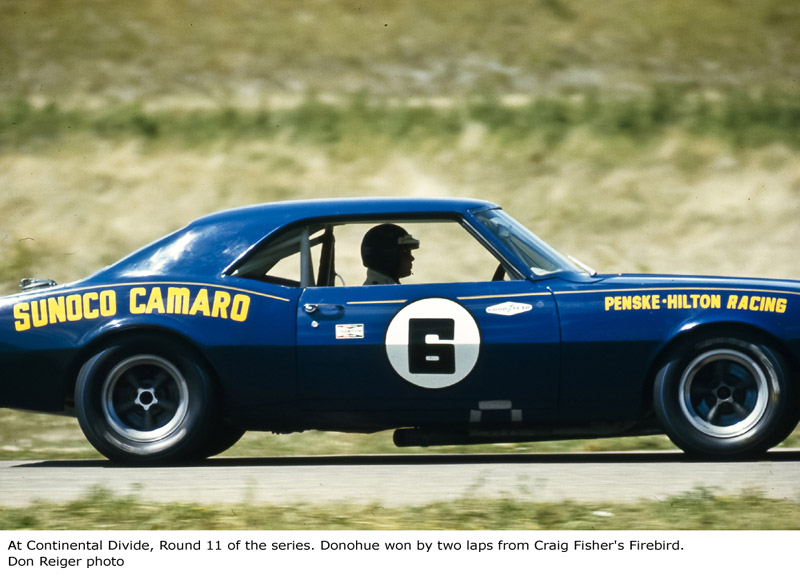-
Administrator


Penske, like all the factory teams, walked a fine-line when interpreting the rule book. In most cases, they worked on the mind-set that anything not clearly stated as illegal, was surely legal. The SCCA were making a slow transition from dealing with weekend warrior amateur racers, as they had done in the past (having been originally established purely for amateur racing), to now dealing with professional teams financed by auto manufacturers, hell-bent on winning at all costs. In cases where rules were specific, the factory teams would go to such lengths as carefully manipulating factory parts to appear stock, when in fact they had been modified. Anything to gain a performance advantage. The Penske crew built clever ‘cheats’ into the ’68 cars, such as moving the control arms, but then modifying the towers, so when going through tech, they still measured as factory stock. Illegal heim-joints were hidden inside the control arms so suspension adjustments could be made.
And like the other factory teams, Penske also found ways to ‘massage’ the frontal bodywork to make their Camaros more aerodynamically efficient, while still appearing factory stock. In 1968, most American cars featured a vertical slab frontal area possessing all the aerodynamic qualities of a barn door. At that, Penske crew member Ron Fournier devised a clever tweak to the nose of the two ’68 Sunoco Camaros, slicing at least an inch out of the radiator core support, so he could then ‘droop’ the front sheet metal downwards, thus bringing the nose closer to the ground, creating less frontal drag, and aiding straight line speed. Of course, this trick created the ripple effect of tipping the front fenders forward, leaving a sizable gap between the top rear of the fender and the body cowl, while the lower rear of the fender overlapped the front of the doors. So the fenders also had to be trimmed and/or extended and modified, to appear factory stock. With generous acid dipping, the race weight of the 1968 Penske Camaros was almost bang-on the minimum 2,800 pound Trans-Am race limit. The presentation of the ‘68 Penske cars matched their on-track performances. They were completely flawless.

Unlike the previous year where the build process was a last-minute dash to make the opening event, the first 1968 Camaro to emerge from the Penske workshop was completed with ample time for testing prior to its opening encounter at the ’68 Daytona 24-Hour race. This year, the Trans-Am points race would be part of the 24-Hour race, rather than a curtain raiser a couple of days before-hand.
The team headed for Daytona to get in some early testing, basing themselves in one of Smokey Yunick’s sheds at his infamous Best Damn Garage In Town. They set themselves the target of completing a full 24-hour test run, to gain a thorough understanding of the new car, and iron out any gremlins that might surface during the race. A cylinder head broke during the test, so they replaced it and kept going. They also tried out a new GM dual 4-barrel cross-ram carburettor intake manifold developed by Bill Howell from Chevrolet. The Chevy motors were already the most powerful in the Trans-Am at just over 400 horsepower. The new cross-ram manifold set-up boosted them to around 450, and eventually the Penske Camaros would get up closer to the 475-mark.

The 1968 Daytona 24-Hour began on 3 February, and despite all their confidence, the Penske team were soundly beaten by their Shelby Ford rivals. Penske entered just one car, to be driven by Donohue, Craig Fisher, and Bob Johnson. They qualified 20th overall, and fastest of the Trans-Am cars, two places ahead of the first Shelby Mustang. The Penske Camaro was marginally quicker on track, but the Shelby team were better in the pits. They’d crafted a system for replacing brake pads faster than the Penske crew. In time, the Penske team would build a reputation for their dynamic team tactics and pit stops, but here at Daytona, it was the Shelby crew who emerged looking the smartest. Then, at the 13-hour mark, the Camaro cracked a cylinder head, and several laps were lost replacing it. While the Titus/Bucknum Shelby Mustang won the Trans-Am class, and finished an impressive fourth overall behind a trio of Porsche 907s, the Penske Camaro came home twelfth overall. But they collected points for second in Trans-Am.

Given their single-car effort was blighted by the cracked head at Daytona, Roger Penske opted for a two-car operation at Sebring, employing the old lightweight car from 1967 (the second ’68 car had yet to be completed), now upgraded to look like a ’68. Donohue/Fisher would drive the ’67 lightweight (car #15), while Joe Welch/Bob Johnson drove the new car (#16). Actually, Fisher started and finished the race in the new #16 car but also spelled Donohue in the #15.
 Posting Permissions
Posting Permissions
- You may not post new threads
- You may not post replies
- You may not post attachments
- You may not edit your posts
-
Forum Rules






 Reply With Quote
Reply With Quote